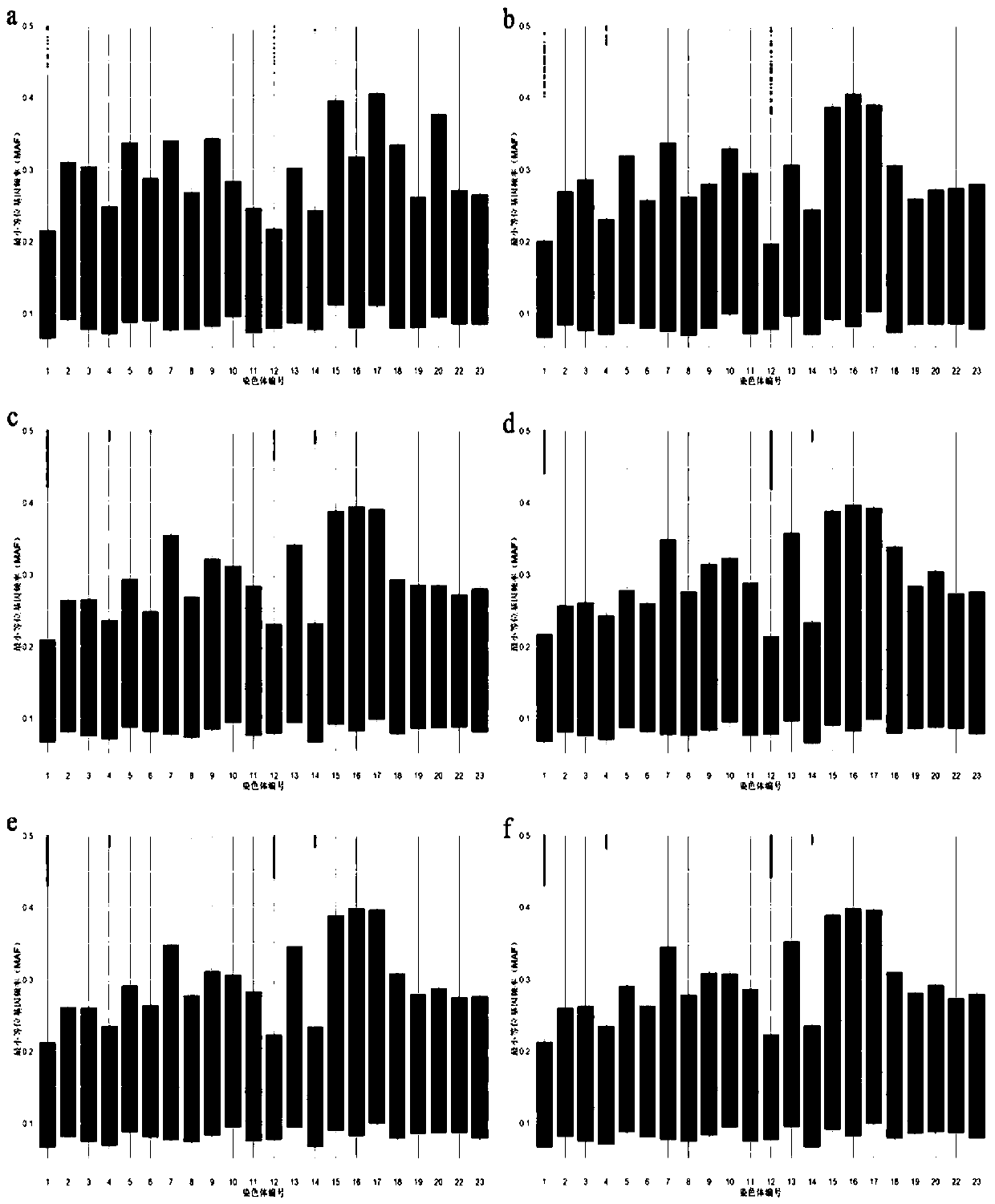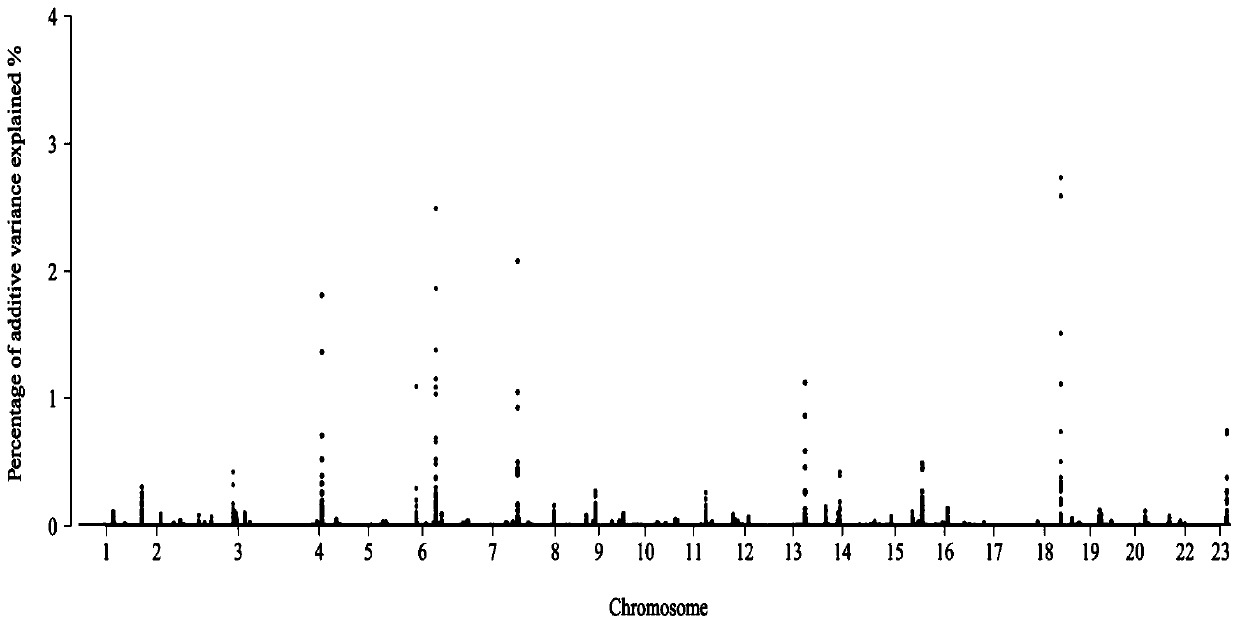Tilapia genome selective breeding method
A genome selection and tilapia technology, applied in genomics, biochemical equipment and methods, proteomics, etc., can solve the problems of slow progress and low accuracy, achieve accelerated breeding, increase survival rate and yield, and promote The effect of green and healthy development
- Summary
- Abstract
- Description
- Claims
- Application Information
AI Technical Summary
Problems solved by technology
Method used
Image
Examples
Embodiment Construction
[0033] Taking Gifu tilapia resistance to Streptococcus agalactiae as an example, the breeding method of tilapia disease-resistant improved species based on genome selection technology is described in detail in conjunction with the accompanying drawings:
[0034] 1) Phenotypic determination of resistance to Streptococcus agalactiae in Gifu tilapia and establishment of a reference population
[0035]The Gifu tilapia families established in 2014 and 2015 were selected as research materials, among which, there were 40 families in 2014 and 49 families in 2015. When the average body weight of fry of each family reaches 50-60 grams, randomly select 150 juveniles from each family to carry out the artificial infection experiment of Streptococcus agalactiae. The time of injection of pathogenic bacteria is regarded as zero point, and the survival of juvenile fish of each family is observed every three hours. If a dead individual is found, fish it out in time and record the family informa...
PUM
 Login to View More
Login to View More Abstract
Description
Claims
Application Information
 Login to View More
Login to View More - R&D
- Intellectual Property
- Life Sciences
- Materials
- Tech Scout
- Unparalleled Data Quality
- Higher Quality Content
- 60% Fewer Hallucinations
Browse by: Latest US Patents, China's latest patents, Technical Efficacy Thesaurus, Application Domain, Technology Topic, Popular Technical Reports.
© 2025 PatSnap. All rights reserved.Legal|Privacy policy|Modern Slavery Act Transparency Statement|Sitemap|About US| Contact US: help@patsnap.com



